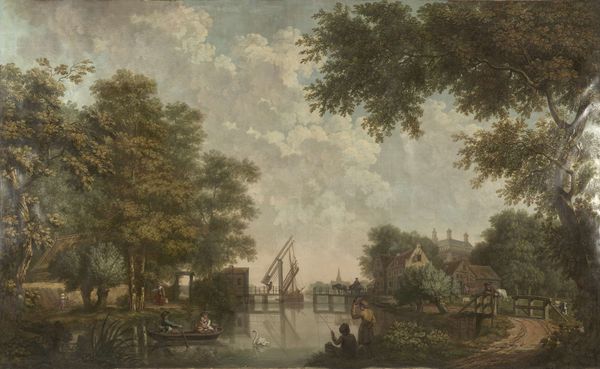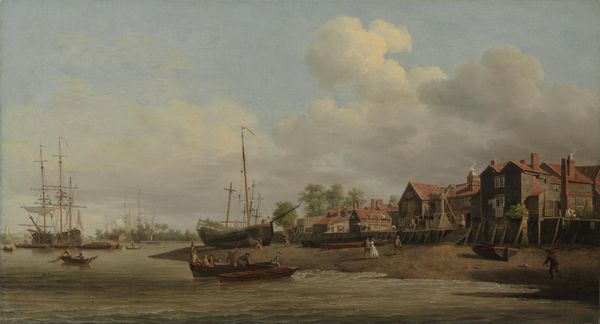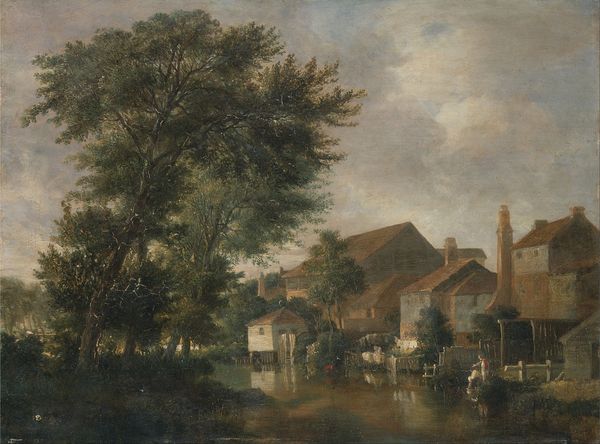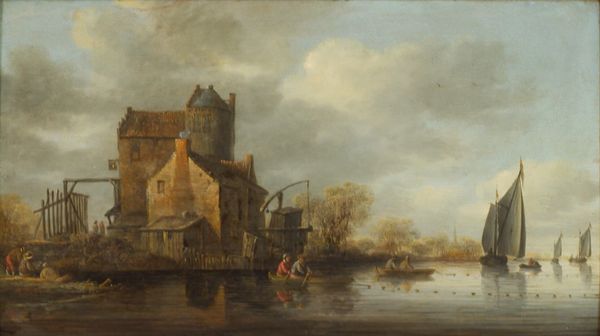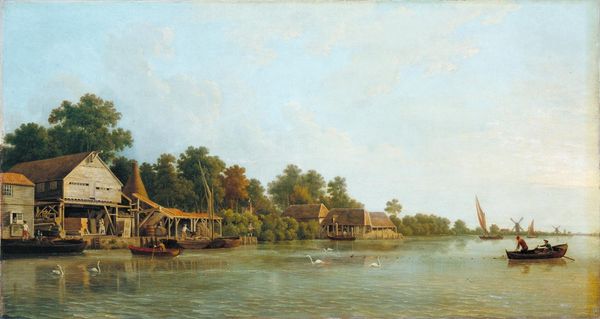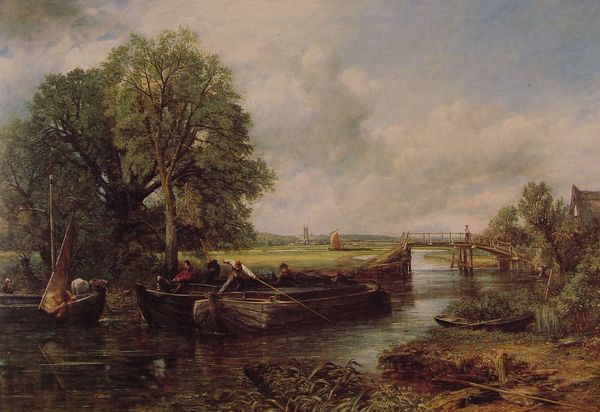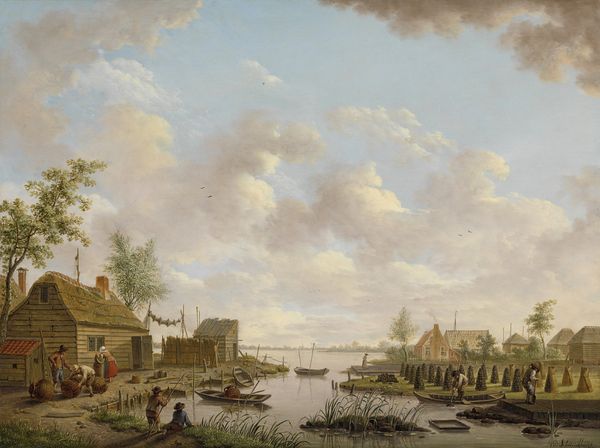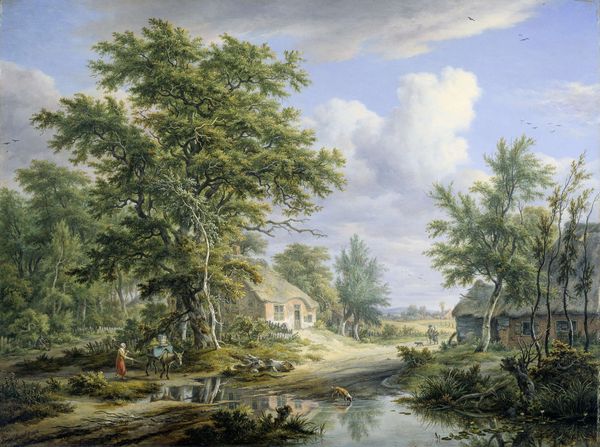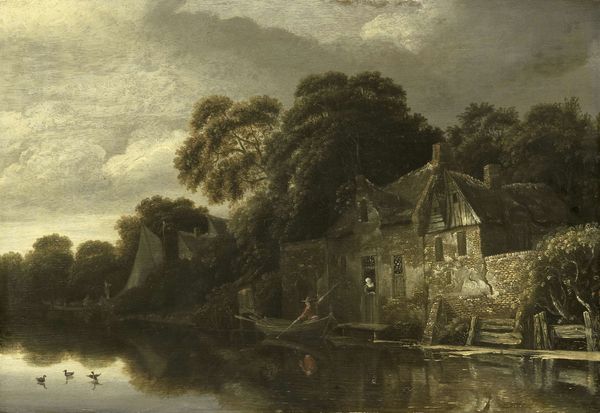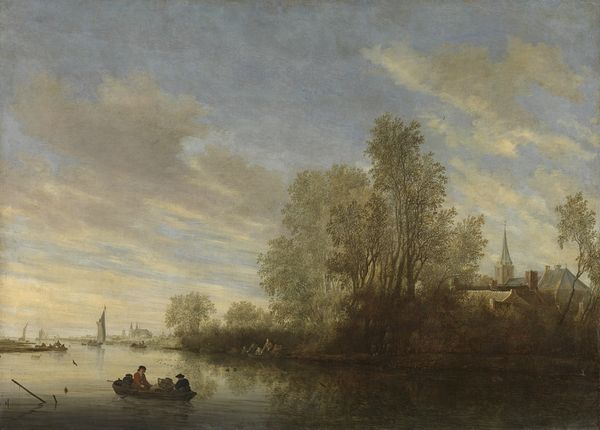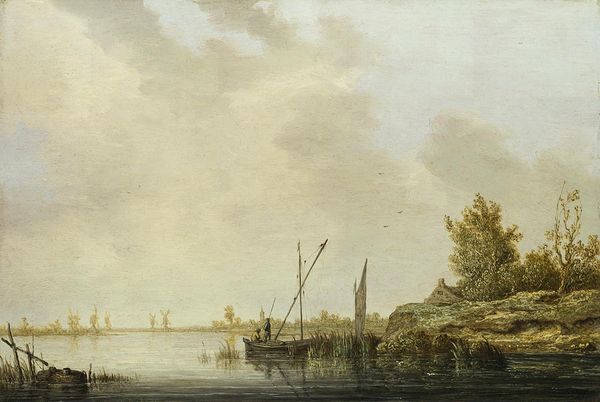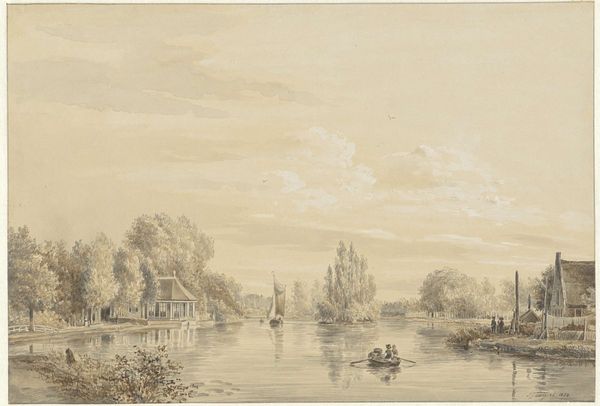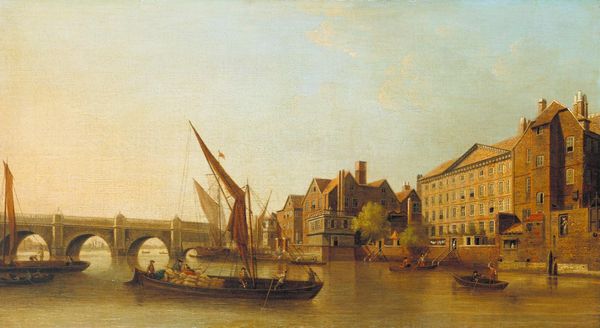
Dimensions: support: 492 x 787 mm
Copyright: CC-BY-NC-ND 4.0 DEED, Photo: Tate
Curator: Marlow's "View on the Thames" presents a tranquil scene, emphasizing the river's role in daily life and commerce. Editor: It evokes such a sense of stillness, a quiet moment captured despite the implied activity. The Thames almost acts as a mirror, reflecting the sky and daily life. Curator: Marlow, born in 1740, painted this view to capture the river as a vital artery for trade and connection, showing the labor of people in contrast with nature. How do you interpret those swans? Editor: Swans often symbolize grace, beauty, and even love. Here, their presence feels almost like an intentional placement, highlighting both natural beauty and the class divisions present. They seem to float along unaffected by the world alongside them. Curator: I agree. Considering the era's social structures, their undisturbed peace can be viewed as a pointed counterpoint to the working-class figures. Editor: It adds a complex layer to what initially appears as a simple landscape. It is so interesting to consider the artist's view when making such works.
Comments
tate 6 months ago
⋮
http://www.tate.org.uk/art/artworks/marlow-view-on-the-thames-t00930
Join the conversation
Join millions of artists and users on Artera today and experience the ultimate creative platform.
tate 6 months ago
⋮
In the 1750s Marlow was a pupil of the foremost native topographical painter of his day, Samuel Scott. His style owes a great deal to that of his master, and also to Canaletto whose works he would have known. The precise location of this view on the Thames is not known, although in the past it has been tentatively identified as Hampton Wick. Painted very much in Scott's manner, the picture most probably dates from the mid 1770s when Marlow was living in Twickenham, in the house previously occupied by Scott. Gallery label, August 2004
